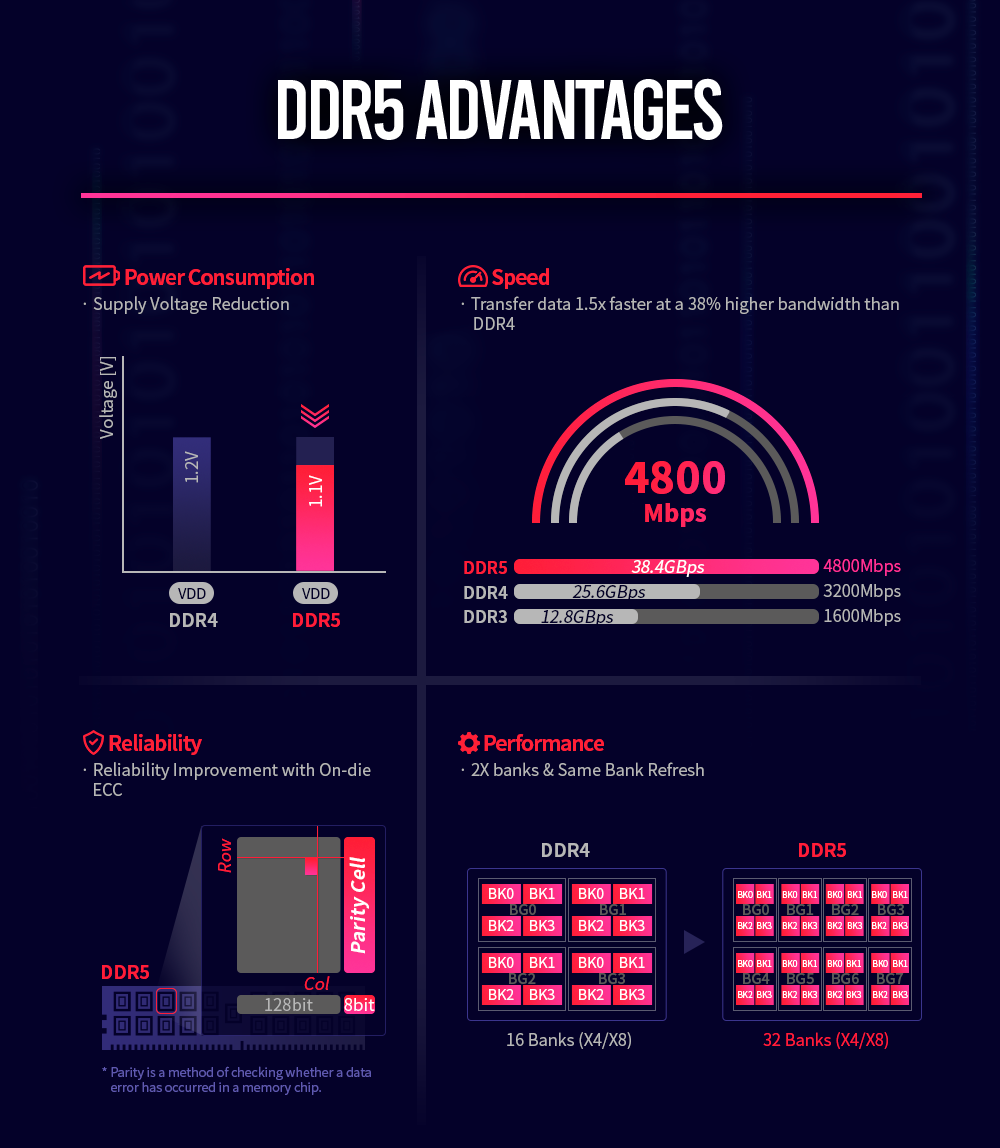Starting next year we'll likely see the first commercial DDR5 implementations, often shortly followed by the consumer segment. SK Hynix shares a few words on that as they are preparing DDR5 that supports more than twice the DDR4’s 3200Mbps. Not just that, the volume per DIMM IC goes up as well, coming from 16 Gb moving to 64 Gb.
When they switched from DDR3 to DDR4 in 2013 the increase in bandwidth per dual in-line memory module (DIMM) was increased by 33% from 1600Mbps to 2133Mbps. However, when developing DDR5, the goal was to achieve more than 4800Mbps, which would be a more than 50% increase of the bandwidth per DIMM.
-- SK Hynix --
In order to increase the memory bandwidth more than twice compared to DDR4, the amount of data processed within the same unit of time must be doubled. DDR5 will provide increased performance, capacity, and power and cost efficiency previously not available to DDR4, and various features are adopted in DDR5 as below to support the increase of memory bandwidth. Firstly, DDR5 adopted 32banks1 structure based on 8 bank groups, which is twice as many as DDR4’s 16banks structure using 4 bank groups. This helped double DDR5’s memory access availability compared to DDR4. Secondly, DDR5’s burst length (BL)2 is increased to 16 compared to 8 of DDR4, which is another key feature to double memory access availability. Thirdly, DDR4 cannot perform other operations while refreshing, so it cannot be accessed from the system during refresh timing. However, DDR5 adopted Same Bank Refresh function, allowing the system to access other banks when certain banks are operating, thus improving memory access availability. Lastly, there are many difficulties in terms of signal integrity with the large number of channels and DIMMs/Sockets in the server system. However, by adopting a Decision Feedback Equalization (DFE) circuit, which eliminates reflective noise during the channels’ high-speed operation, DDR5 increased the speed per pin considerably.
DDR5 provides a power-efficient design and improved reliability features, while delivering increased performance compared to DDR4. First of all, with an operating voltage of 1.1V, lowered from DDR4’s 1.2V, DDR5 aims to reduce power consumption per bandwidth by more than 20% of its predecessor. According to the market research company International Data Corporation (IDC), demand for DDR5 was expected to rise from 2020 and account for 22% of the total DRAM market in 2021 and 43% in 2022.4 SK hynix is planning to lead the market by actively responding to customer demands for ultra-high-speed, high-capacity memory, starting with 10nm-class 16Gb DDR5.
SK hynix will start the mass-production of its DDR5 memory chip this year. At the same time, we will pursue the research and development of DRAM technologies to lead the next generation of semiconductors. We are positioning ourselves to keep on delivering our innovative, high-performance and reliable products to more people in even bigger, bolder ways.
1Bank: A data-storing unit which can be activated or deactivated independently. Data within an activated bank is capable of process read and write operation sequentially.
2Burst Length (BL): The amount of data which is input/output based on a single read/write command in DRAM.
3Error correction code (ECC): Error correction code detects and corrects internal data errors.
4″Worldwide DRAM Demand and Supply 4Q19–4Q20 and 2020–2024 Update”, Mar 2020, International Data Corporation.
SK Hynix to have Superfast 4800 Mbps DDR5 memory on its roadmap




